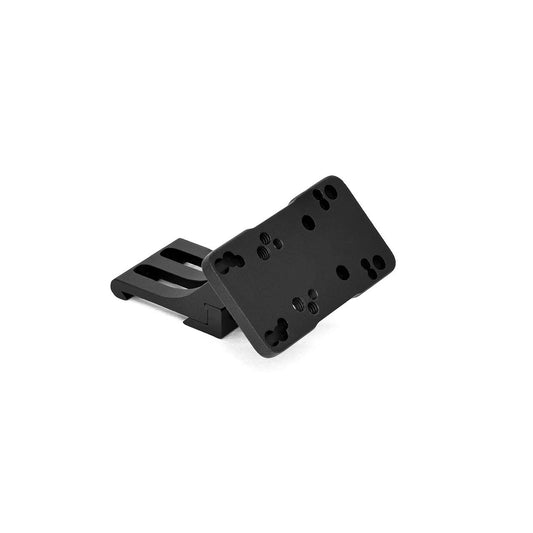

Specifically designed for right handed or right eye dominant shooters.
The Warne degree Offset Reflex Mount Is designed to offer a reflex sight mount that fits the most popular optic mounting patterns while seamlessly blending into the top rail of a rifle ensuring the maximum amount of space to clear a scopes eyepiece or zoom ring. The height and angle of the mount place the optic in a position to allow for fast target acquisition.
With the increasing number of electro optics being used fnding a compatible mounting system can be confusing. Their modular Red Dot Riser to ?t a wide range of different optics based on the mount footprint. All riser mounts that we offer share a robust mounting base while the top is engineered speci?cally for different red dot styles. For:
- Burris Fast Fire 2 & 3 (requires included hardware)
- CMORE RTS & STS
- Doctor
- Eotech MRDS
- Holosun 507c/407c V1 versions
- Holosun 507c/407c V2 versions
- Insight MRDS
- Leupold Delta Point
- Leupold Delta Point Pro
- Shield RMS
- Sig Romeo 3
- Sig Romeo 3 Max
- Sig Romeo 3 XL
- Trijicon RMR
- TrueGlo
- UTG Reflex Micro Dot
- Vortex Razor
- Vortex Venom
- Vortex Viper
- And others with same hole pattern(s)
- Designed and MADE IN USA
You May Also Like
Here’s some of our most similar products people are buying. Click to discover trending style.






